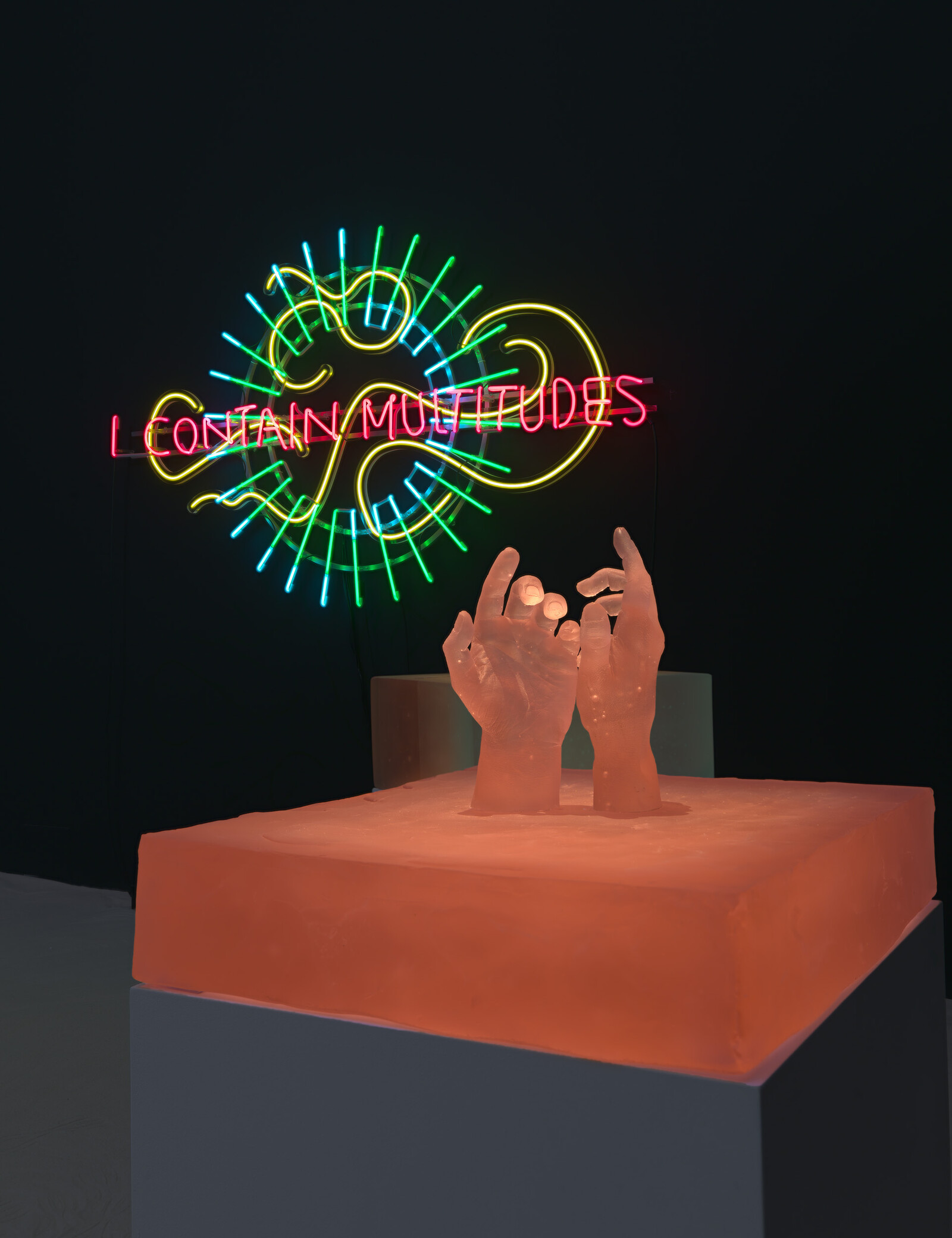15 Old Bond Street
London W1S 4AX
UK
Hours: Monday–Friday 10am–6pm
T +44 20 7495 8805
london@mazzoleniart.com
The multi-site exhibition Marinella Senatore: Afterglow opened on June 9 at Mazzoleni in 15 Old Bond Street with a private view at the gallery as well as a free, open to all, inaugural performance at Battersea Power Station. With a multidisciplinary practice focused on the transformative power of social engagement and community activation, Senatore’s “collective ritual”—as defined by the artist—activated the light sculpture Assembly (2021), positioned in the in front of the Grade II* listed Power Station, a space that “naturally” gathers communities and has hosted Senatore’s projects previously in 2018 within the framework of Art Night London: a network of participants again reunited on the occasion of this celebration.
The participatory performance involved local residents and about 200 performers, each of them sharing core values as well as personal connections with the artist and The School of Narrative Dance (SOND), Senatore’s renowned participatory project that counts a network of about seven million participants across 23 countries. Performers included different types of music bands, such as the South-London based “Melodians Steel Orchestra UK”, who performed a specially commissioned up-tempo version of David Bowie’s “Life on Mars” for the first time; dancers, including “Pointe Black”, a Black-owned ballet school that aims at an inclusive access to ballet in tune with concepts relating to the ‘decolonisation of the body’, and the “London Contact Improvisation”, a group of contact dancers, especially relevant after two years of social distancing; choirs, such as a gospel choir as well as members from the “Goldsmiths Choral Union”, the biggest amateur choir in England; a soprano singer who performed a piece by Schubert, which represents a key moment in Senatore’s life when she created her first artwork; a group of body percussionists who work with seniors, reflecting on mindful movements, the social space and the meaning of the old body in society; and the “Esprit Concrete” parkour group, which has been collaborating with Senatore for a long time and combines l’Art Du Déplacement with counselling psychology principles and therapeutic interventions, amongst others.
The other public installations include Bodies in Alliance at SIAL School and the Association of Ukrainians in Great Britain and other three installations (We Rise by Lifting Others; Assembly; Dance First Think Later) at Petersham Nurseries in Covent Garden.
The exhibition at the gallery captures a more personal and immersive experience with a new body of sculptures and drawings. From the Oxford Dictionary, the word “afterglow” is defined as “a light or radiance remaining after the source has disappeared”, as well as “a pleasant feeling remaining after an enjoyable experience. In an intimate “glowing in the dark” atmosphere—reminiscent of Fabio Mauri’s Moon environment—the show brings together several previously unseen neon sculptures, light sculptures, and installations, which have been produced using a mercury-free technology. As a socially engaged activist, sustainability is crucial to Senatore, who has been committed to lowering the carbon-print of her practice for the last few years.
The wall-mounted light sculptures featured in the show include messages of empowerment, such as Dance First Think Later, a quote by Samuel Beckett, and We Rise by Lifting Others, by Robert Ingersoll. The display also presents the newest glass sculptures in lost-wax casting glass: I Contain Multitudes, quoting Walt Whitman, and Autoritratto (Self-Portrait), featuring the artist’s life-size casted hands, an iconographic element that often returns in the artist’s work.
Collages, drawings, and embroideries—emerging from various contexts such as learning theatre, oral histories, vernacular forms, protest dance and music, public ceremonies, civil rituals, and mass events—will also be part of the exhibition. Through her participatory practice, Marinella Senatore questions the bio-politics of different communities and circumvents the traditional roles of artist and audience, extending the idea of “assembly”, “community”, and “rituals.” For example, It’s Time to Go Back to the Street is a continual series of drawings that explore the multifaceted forms and rich legacies of protests in different countries, while also engaging with ecologies of affiliation, affection, empowerment, and belonging.









